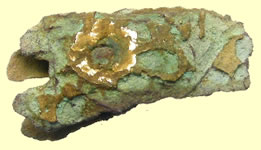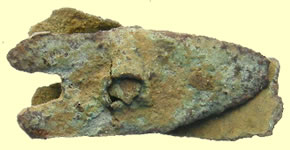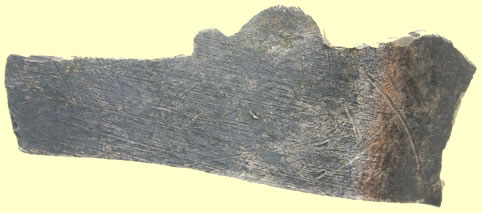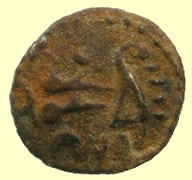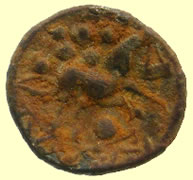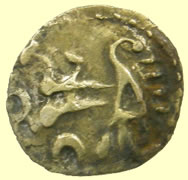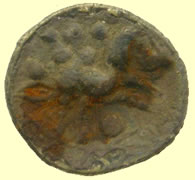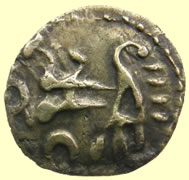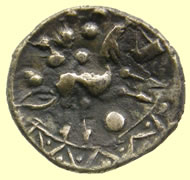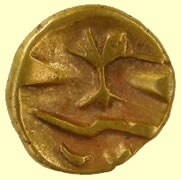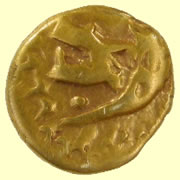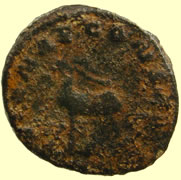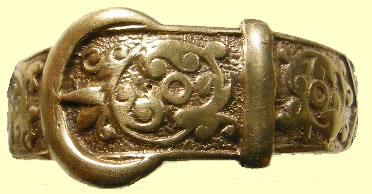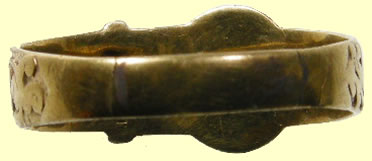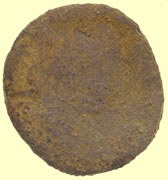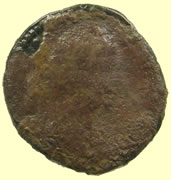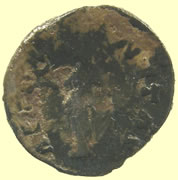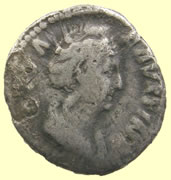

Metal detecting holidays in England with the World's most successful metal detecting club.
Twinned with Midwest Historical Research Society USA
2010 Oct finds page II |
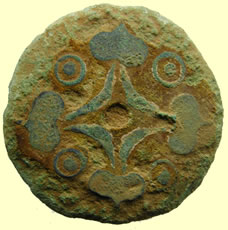  |
|||||||||||||||||
Interesting large early medieval enameled mount with red, blue and green enamel remaining. Very different mounting set up with 4 integral lugs and a double folded lug. |
|||||||||||||||||
|
|||||||||||||||||
Interesting circle decorated Roman piece - appears to be a handle for a pot - one for the museum
|
|||||||||||||||||
 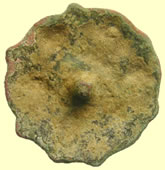 |
 |
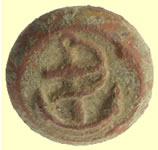 |
|||||||||||||||
1500-1700 mount |
Military badge |
German navy ? |
|||||||||||||||
 |
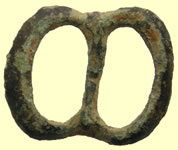 |
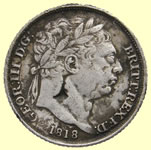 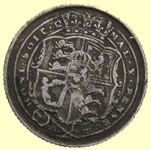 |
|||||||||||||||
15thC open topped thimble |
1550-1650 buckle |
1818 George III milled silver sixpence |
|||||||||||||||
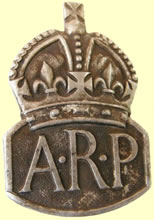  |
|||||||||||||||||
1938 London hallmarked silver Air Raid Police badge Thomas Chawner - maker Air Raid Protection Wardens were appointed through out Britain to assist the Police in protecting the public during air raids. In September 1935, as the possibility of a war increased, the British prime minister, Stanley Baldwin, published a circular entitled Air Raid Precautions (ARP) inviting local authorities to make plans to protect their people in event of a war. In April 1937 the government decided to create an Air Raid Wardens' Service and during the next year recruited around 200,000 volunteers. The duties of an Air Raid Warden included: Ensuring that the blackout was observed, sounding air raid sirens, ensuring that people went into public air raid shelters in an orderly fashion, checking gas masks, evacuating areas around unexploded bombs as well as helping to rescue casualties from bomb damaged properties, finding accomodation for people who had been bombed out, judging the extent and type of damage and informing the Control Centre to send out the rescue services.
|
|||||||||||||||||
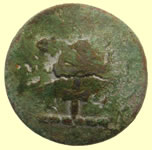 |
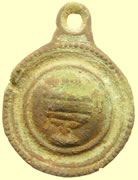 |
 |
|||||||||||||||
19thC livery button |
17th harness hanger |
17thC sword belt fitting |
|||||||||||||||
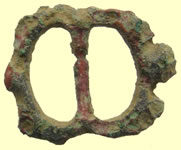 |
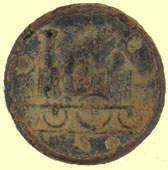 |
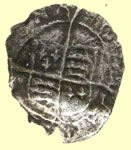 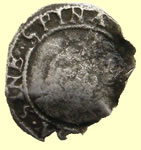 |
|||||||||||||||
1550-1650 buckle |
19thC railway button |
1558-60 Elizabeth 1st hammered silver penny |
|||||||||||||||
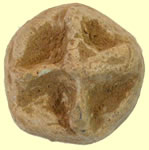 |
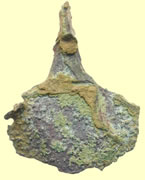 |
  |
|||||||||||||||
c10thC Saxon lead gaming piece |
Medieval harness shield pendant - gold remains |
Huge 1827 King Petrus Portuguese 40 Reis coin -1/8 inch thick |
|||||||||||||||
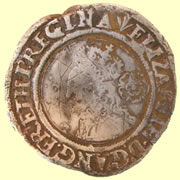 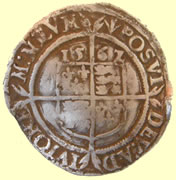 |
 |
|
|||||||||||||||
1562 Elizabeth hammered silver sixpence |
18thC toy cannon |
Composite mount Broad period: MEDIEVAL Period to: POST MEDIEVAL Date from: Circa AD 1300 |
|||||||||||||||
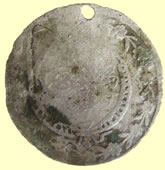  |
|
||||||||||||||||
19thC Ottoman empire silver coin |
Medieval bronze ring with coloured stones |
||||||||||||||||
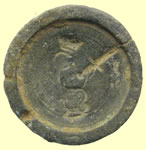 |
 |
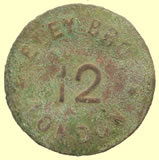 |
|||||||||||||||
George II trade weight - Crown G London |
19thC livery button |
ELEY BROTHERS LONDON The first patent recorded for the so-called Wire Cartridge was that of Joshua Jenour, Patent No. 5570 of November 28, 1827. 'The Cartridge is made of wire, woven with meshes so wide as to allow the shot to be scattered'. The Patent was bought and developed by Eley Brothers, the London firm who made percussion caps, and who then marketed their Patent Wire Cartridge for muzzle loading guns. The first published accounts of this new idea appear in the 1830 (6th Edition) of Colonel Peter Hawker's |
|||||||||||||||
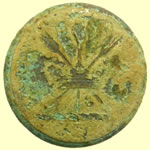 |
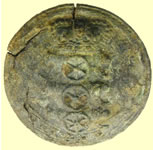 |
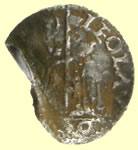  |
|||||||||||||||
19thC livery button |
|
1501-1521). Rev: LAVS TIBI SOLI (Thee Alone be Praised). Haloed figure of Christ holding a cross. Obv: LE LAV DVX S M V (Leonardo Lauredan, Doge. St Mark of Venice.) Doge kneeling before Saint Mark. |
|||||||||||||||
   |
|||||||||||||||||
Medieval gilded harness pendant - interesting design I have not seen before with back plate
|
|||||||||||||||||
 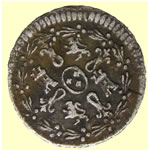 |
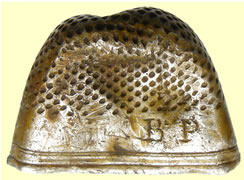 |
||||||||||||||||
Tiny 1799 Carlos IIII Spanish milled silver 1/2 Real- Seville mint mark |
18thC silver thimble - initials BP |
||||||||||||||||
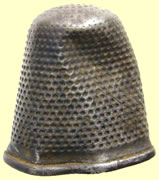 |
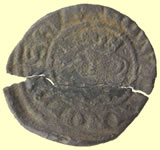 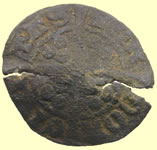 |
||||||||||||||||
Georgian silver thimble |
1341 Edward III hammered silver florin penny - too cracked to clean Obv EDWARR ANGLE DNS HYB Rev CIVI/TAS/LON/DON - London mint
|
||||||||||||||||
 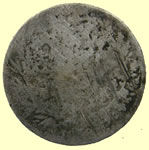 |
  |
||||||||||||||||
1859 Victorian milled silver sixpence |
19thC lead Napoleon figurine |
||||||||||||||||
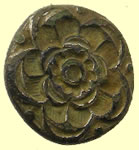 |
 |
 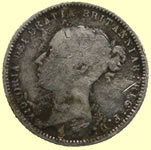 |
|||||||||||||||
Georgian button |
Hooked mount Date from: Circa AD 1600 |
1869 Victorian milled silver sixpence |
|||||||||||||||
|
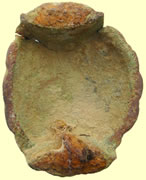 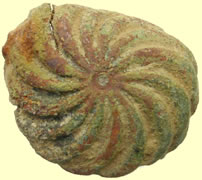 |
||||||||||||||||
Medieval gilded buckle plate - single rivet fixing |
17thC decorated belt slide |
||||||||||||||||
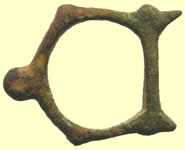 |
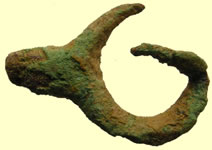 |
  |
|||||||||||||||
Medieval buckle |
C10thC Saxon harness cheek pice fragment |
||||||||||||||||
Medieval hammered silver groat fragment - London mint |
|||||||||||||||||
 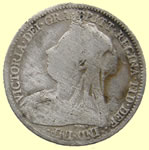 |
 |
 |
|||||||||||||||
1897 Victoria milled silver sixpence |
17thC spur rowell |
19thC Charring Cross Property insurance tag |
|||||||||||||||
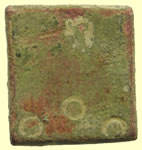 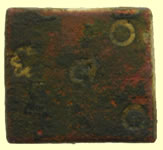 |
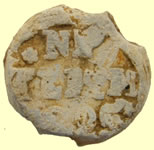 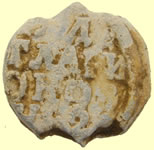 |
||||||||||||||||
18thC bullion weight - Lion mark |
1805 Russian lead bale seal |
||||||||||||||||
 |
 |
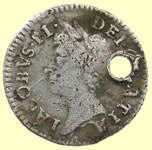 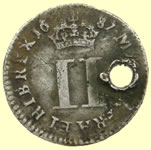 |
|||||||||||||||
16thC stone matchlock shot |
Georgian silver thimble |
1687 James 1st milled silver 2 pence |
|||||||||||||||
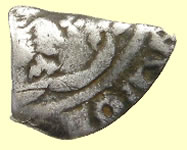 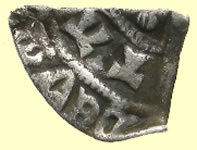 |
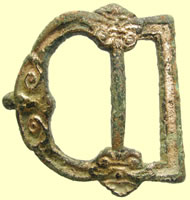 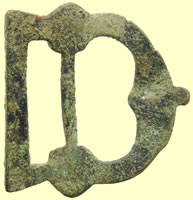 |
||||||||||||||||
Medieval quartered hammered silver half groat - 1/2 pence |
1550-1650 buckle |
||||||||||||||||
  |
 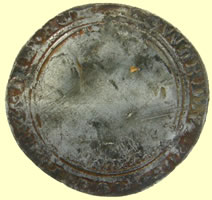 |
||||||||||||||||
1560-6 Elizabeth hammered silver 6 pence |
1551-3 Edward VI hammered silver sixpence |
||||||||||||||||
|
|||||||||||||||||
Huge fragment of Georgian silver - must be mirror frame |
|||||||||||||||||
Finally cleaned
|
|||||||||||||||||
1stC BC Celtic gold 1/4 stater- sent to CCI for recording and ID Pictures as dug and after partial 'cooking' 14.46mm, 1.40g This one has been allocated the CCI number 10.1044. It is a British G “Clacton” quarter, Hobbs 192 (he mis-identified it as an H quarter for some reason). At least 44 known before this – from right across the area most people would label as territory of the Trinovantes... Thanks, Ian
|
|||||||||||||||||
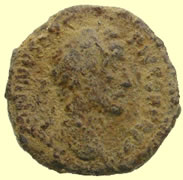  |
|||||||||||||||||
Roman 2ndC silver coin - reported as part of an existing hoard to the museum 17.86mm,2.93g
I cannot clean this coin as it is hoard - sent to Mark Lehman for his views That's a denarius of Antoninus Pius, 138-161 AD. He was responsible for building the 2nd wall, a bit north of Hadrian's, but constructing it from earth and wood rather than Hadrian's stone, I hear not much of it survives.
The reverse legend, COS IIII, was used on at least some denarii in each year from 145-158 encompassing literally hundreds of separate types, so we need to try to read the obverse legend to get a better idea of the date. As far as I can tell, enlarging and tweaking the photo, the obverse legend reads: ANTONINVS AVG PIVS P P TR P [XII? through XXI?] - and of course, given Murphy's law of ancient coin legends, the part we really need to be certain about is the most unclear. It appears to consist of 3 numerals, the 1st must be an X and I think the 2nd might be a V, so it seems fairly likely this was struck during Antoninus' 16th Tribunician year = 152-153 AD.
On the reverse a personification stands left holding a cornucopiae on her left arm and - well, Murphy again - we can't quite tell what's in her right hand because of the lamination damage to the lower left quadrant. So, checking the list of COS IIII denarius reverses for 152/3 AD, the only one on which the personification holds a cornucopiae is Fortuna, and if so, she should be holding a rudder on a globe. Checking a photo of that type which happens to be a plate in one of my references, I see that this is not the normal sort of rudder - it's very tall, as tall as Fortuna or more, and given the downward and outstretched attitude of the right arm on this personification it can't be Fortuna! - Back to the drawing board.
Given the angle at which she holds her right arm, it almost certainly must be a branch she's holding, possibly a caduceus, but more likely a branch. Checking a comprehensive list of A. Pius denarius types, I find that only in TR P XIX, do we have a type - Pax - holding a branch and cornucopiae - checking the obverse photo again, I must admit that, yes, it could just as well be XIX as XVI.
So, what we're left with as our most likely possibility is 4th Consulship (from the reverse legend) and 19th Tribunician power - if we're correct on the combination, it would date the coin to 156 AD.
Therefore my best guess for attribution to catalog references would be RIC III 246, RSC 256, Pax holding branch & cornucopiae.
At the least, I feel it's highly unlikely to date before 149 (TR P XII - Aequitas holding scales & cornucopiae or Felicitas holding caduceus and cornucopiae) or after 156 (TR P XIX - Pax, as above)
Normally I'd be pretty happy to date a coin to a 6 or 7 year period, but given the dates which should be clearly visible on this coin, it's a little disppointing that I can't be more certain. If it is possible for someone to examine the coin "in person" to confirm or refute the TR P XIX (about 5:00 obverse) theory, and/or supply us with a more accurate reading of the final 3 characters in the obverse legend, we could be more certain about the date.
Mark
|
|||||||||||||||||
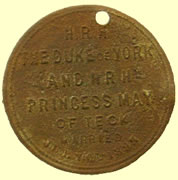 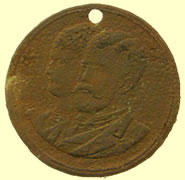 |
  |
||||||||||||||||
HRH The Duke of York and HRH Pricess May marriage medallion 6 July 1893 Mary of Teck (Victoria Mary Augusta Louise Olga Pauline Claudine Agnes; 26 May 1867 – 24 March 1953) was the queen consort of the United Kingdom and the British Dominions, and Empress of India, as the wife of King-Emperor George V |
Huge 1892 Victoria milled silver half crown - (30 pence) |
||||||||||||||||
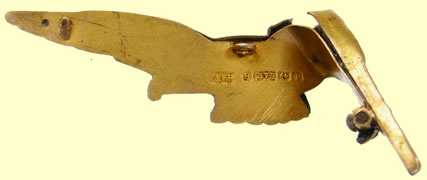  |
|||||||||||||||||
1939 Birmingham hallmark gold RAF sweetheart badge |
|||||||||||||||||
 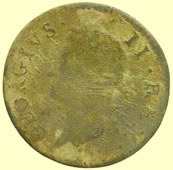 |
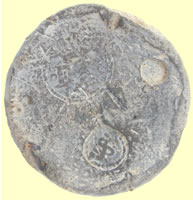 |
||||||||||||||||
1749 George II Irish half penny |
Huge 16thC Elizabeth 1st lead trade weight - Crown E cipher |
||||||||||||||||
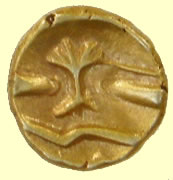 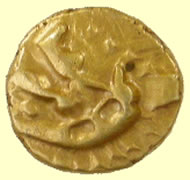 |
|||||||||||||||||
70BC Morini Celtic 'boat tree' gold qtr stater - Sent to CCI for recording 1.48g, 10.86mm CCI 10.1045
Gallo-Belgic Dc gold quarter stater. “Morini”, c. 60-50 BC. “Boat” and “tree” like designs Delestree & Tache 249, VA 69-1, Scheers 13, pl. 5.115-117.
These are obviously pretty common finds all along the Thames/SE.
Ian |
|||||||||||||||||
  |
 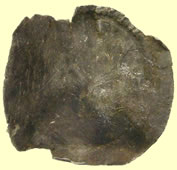 |
||||||||||||||||
Medieval hammered silver shortcross cut halfpenny |
16thC Elizabeth 1st hammered silver half groat |
||||||||||||||||
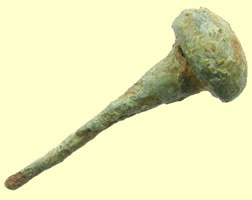 |
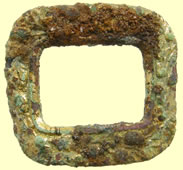 |
 |
|||||||||||||||
Roman pin |
Georgian buckle |
Britain's Merchant Navy Generic Design Issue In use 1900 's onwards |
|||||||||||||||
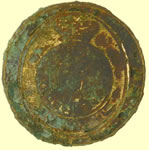 |
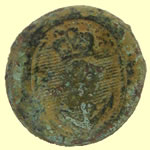 |
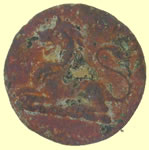 |
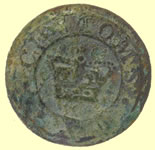 |
||||||||||||||
One piece Navy button HONI SOIT QUI MAN Y PENSE PACKET Honi soit qui mal y pense (Old French: shame upon him who thinks evil of it) RN - Packet Service c.1800-1811 |
RN Capt / Commander - 1812 RN Lieutenant - 1812 RN Midshipman - 1812 RN Volunteer Gr.I - 1812 |
19thC livery button |
19thC Customs button |
||||||||||||||
 |
 |
 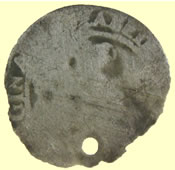 |
|||||||||||||||
? |
18thC bayonet frog |
1564 Elizabeth 1st hammered silver 2 pence
|
|||||||||||||||
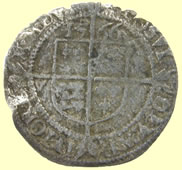 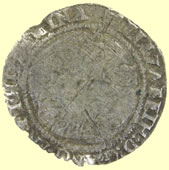 |
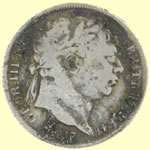 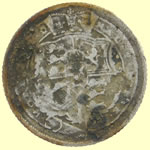 |
||||||||||||||||
1566 Elizabeth 1st hammered silver 3 pence |
1816 George III milled silver sixpence |
||||||||||||||||
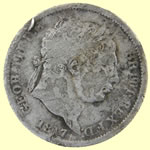 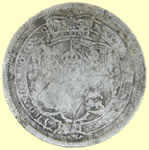 |
 |
||||||||||||||||
1817 George III milled silver sixpence |
Victorian butterfly pendant |
||||||||||||||||
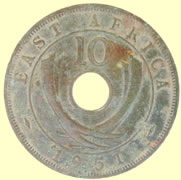  |
 |
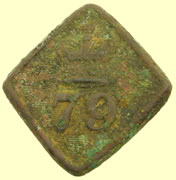 |
|||||||||||||||
1951 East Africa 10 cents copper coin |
|
|
|||||||||||||||
 |
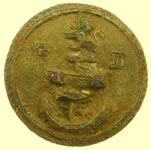 |
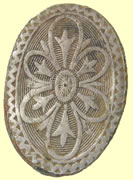 |
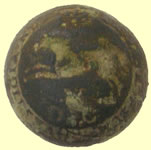 |
||||||||||||||
18thC toy cannon |
|
Georgian silver faced cufflink |
Unrecorded 5th Dragoon guards button - Crimera wars period |
||||||||||||||
 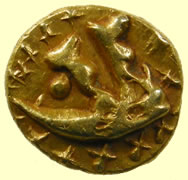 |
|||||||||||||||||
70BC Morini Celtic 'boat tree' gold qtr stater - Sent to CCI for recording Very interesting example being the lightest we have ever found and the smallest diameter. Normal weight range of a Morini is 1.41-1.45g Also a very different die type so it will be interesting to see the comments from the CCI experts 1.23g, 9.22mm |
|||||||||||||||||
 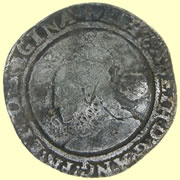 |
 |
||||||||||||||||
1580 Elizabeth 1st hammered silver sixpence |
17thC lead token - WH |
||||||||||||||||
70BC Morini Celtic 'boat tree' gold qtr stater - Sent to CCI for recording 1.45g, 10.80mm |
|||||||||||||||||
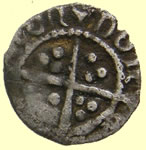 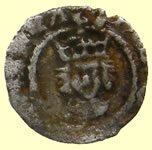 |
 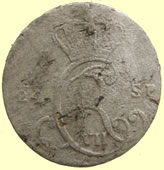 |
||||||||||||||||
1485-1509 Henry VII hammered silver halfpenny - Brush hair Cross fourchee - Type 3c Obv HENRIC DI GRA REX AL Rev CIVI/TAS/LONDON - London mint |
1796 Danish silver coin |
||||||||||||||||
3rd C Roman silver sent off for ID
|
|||||||||||||||||
This one is a DIANAE CONS AVG antoninianus of Gallienus (253-268 AD.) This is part of the so-called "Gallienus Zoo" series of animal reverses. This one appears to be either the gazelle http://www.stoa.org/gallery/album452/08_CR_GAZOO or possibly the left-facing stag elk variety http://www.stoa.org/gallery/album452/11_CR_GAZOO These two are just a couple of the many animals found paired with this reverse legend. The series invokes the aid of several gods - Apollo, Diana (this one) Jupiter, Liber (Bacchus) Neptune, Sol, etc, all with "CONS AVG" (protector of the emperor) and various animals on their reverses.
This series dates to 267-8 AD. and was produced at the mint in Rome.
This is an interesting find as Britannia wasn't part of the Italian Roman Empire at the time this was struck. Britannia was part of the break-away Gallic Roman Empire at that time, so this piece evidently was in circulation for a few years until after the re-uniting of the Empire under Aurelian (c. 272-275) to have traveled to Britain. Among Aurelian's reforms was a revamping of the silvered Æ coinage which had become barely better than bronze with a tiny percentage of silver under Gallienus and Claudius Gothicus, his successor.
Books will call Gallienus' antoniniani "billon" - and so they were at the beginning of his relatively long reign which, in the beginning, was shared with his father, the unfortunate Valerian I. After his father's capture by the Sasanid Persians c. 260, the antoninianus went through a swift series of debasements under Gallienus to become a coin containing so little silver it needed to be silvered to keep up the pretense of being a double-denarius. Although officially silvered, Gallienus' later antoniniani are seldom encountered with any of their silvering remaining, and things may have finally become so bad that even the pretense of silvering may have been dropped at the end of his reign. An occasional subject for contemporary copies as well, this one seems to be official.
I'll refer you to this page in my website. http://www.stoa.org/gallery/album452 The organization I work for - Ancient Coins for Education, Inc, or ACE - recently received the donation of a fairly well-developed private collection of Gallienus' zoo coins. Since the donor asked that we do our best to keep the group together, it is currently an adjunct exhibit to our travelling museum. This is what the collection contained when it was donated. We have since added a couple of types the original collector was missing.
Mark |
|||||||||||||||||
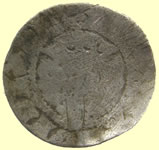  |
 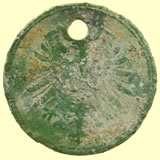 |
||||||||||||||||
1341 Edward III hammered silver penny **** ANGL DNS HYB Rev CIVI/TAS/LON/DON - London mint |
1874 German 1 Pfennig coin |
||||||||||||||||
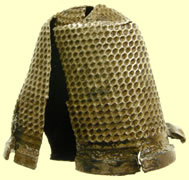 |
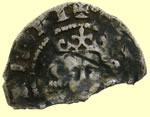 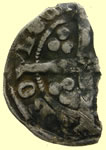 |
||||||||||||||||
Georgian silver thimble |
1352-53 Edward III hammered silver penny - Pre treaty or Post treaty - Quatrefoil with pellet at centre of reverse cross Obv **** ANGLI + Rev CIVI/TAS/EBO/RACI - York mint |
||||||||||||||||
 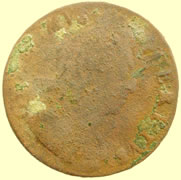 |
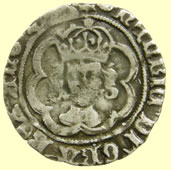 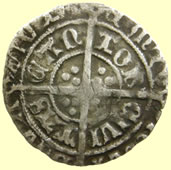 |
||||||||||||||||
1700 William III milled copper halfpenny |
1487 Henry VII hammered silver half groat Rev HENRIC DI GRA REX ANGL ** Rev CIVI/TAS/CAN/TOR - Canterbury mint |
||||||||||||||||
  |
 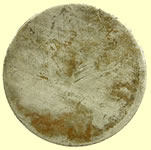 |
||||||||||||||||
1279 Edward hammerd silver farthing - Type 2 Obv + EDWARVS REX Rev CIVI/TAS/LON/DON - London mint |
1834 William IIII milled silver sixpence |
||||||||||||||||
 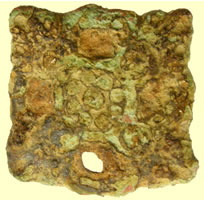 |
|||||||||||||||||
Medieval enameled circule decorated harness pendant mount - 2 integral lugs |
|||||||||||||||||
  |
 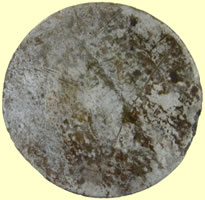 |
||||||||||||||||
A copper-alloy mount Date from: Circa AD 1600 |
1704 Queen Anne milled silver half crown (30 pence) |
||||||||||||||||
 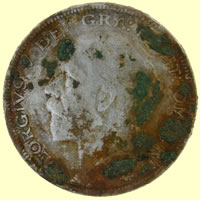 |
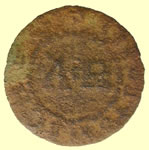 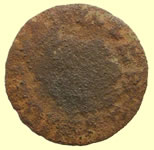 |
||||||||||||||||
1928 George V milled silver half crown (30 pence) |
Unknown 17thC hammered copper trade farthing - AR |
||||||||||||||||
Gold ring - 1980 Birmingham hall mark - 22 carat 3.17g, 22.98mm dia Maker L&S Levi & Salaman Birmingham |
|||||||||||||||||
As dug
Part 'cooked' Roman silver coin straight into the 'cooker' to remove the 'crust'
Cooked and sent off to mark Lehman for ID - 2.14g,17.56mm
This is a posthumous denarius in honor of Faustina the Elder, wife of Antoninus Pius. They were married, presumably fairly happily for a Roman aristocratic couple, probably towards the end of Trajan's reign. She bore him four children, although only Faustina the Younger, who was to marry Antoninus' successor Marcus Aurelius, survived until Antoninus became emperor in 138. Faustina the Elder died in 141, only a few years after he was chosen as Hadrian's "emergency" successor, Aelius, Hadrian's chosen successor, having predeceased him. Most of her posthumous coinage dates to after 147 AD, although for how long they continued to be issued is unclear. There is speculation that the 10th and 15th anniversaries of her death were occasions for major emissions, so a date of either 151/2 or 156/7 is most likely. The reverse of this DIVA FAVSTINA is AETERNITAS. It shows the personification of Aeternitas standing left, holding a phoenix and lifting a fold of her skirt. This posture is reminiscent of Spes (hope) who typically holds a flower and lifts a fold of her skirt. Although Spes would be a very unusual and inappropriate reverse type for a posthumous issue. it is interesting in how it mirrors that posture.
RIC III 347 & RSC 34.
Mark
|
|||||||||||||||||
 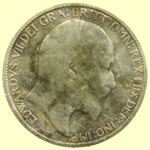 |
  |
||||||||||||||||
1908 Edward VII milled silver sixpence |
1242-1247 Henry III hammered silver shortcross penny - Class 8b, letter X in Rex cross pommee Obv HENRICVS REX Rev **** OLE.ON.LVN - Moneyer Nicole of London |
||||||||||||||||
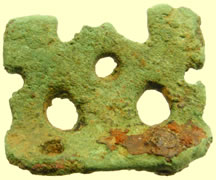 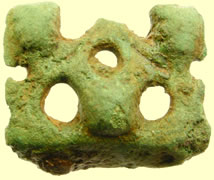 |
|||||||||||||||||
C10thC Saxon harness stirrup mount |
|||||||||||||||||
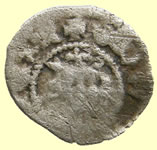 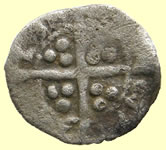 |
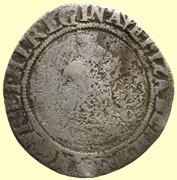 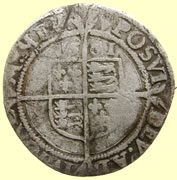 |
||||||||||||||||
1300-10 Edward 1st/2nd hammered silver farthing - Type 28f Obv + EDWARVS REX AN Rev CIVI/TAS/LON/DON - London mint |
1561-5 Elizabeth 1st hammered silver sixpence - Pheon mintmark |
||||||||||||||||
 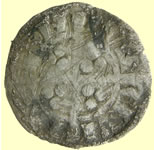 |
 |
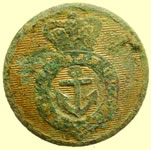 |
|||||||||||||||
1327 Edward III hammered silver penny - Cross 3 Rev CIVI/TAS/LON/DON - London mint |
WWII German Navy Kriegsmarine Button
|
19thC customs button |
|||||||||||||||
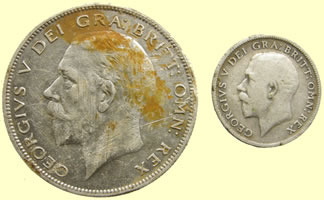 |
|||||||||||||||||
Size comparison of a milled silver halfcrown (30 pence) and a sixpence |
|||||||||||||||||
 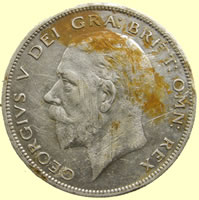 |
  |
||||||||||||||||
1929 George V milled silver half crown (30 pence) |
1921 George V milled silver sixpence |
||||||||||||||||
 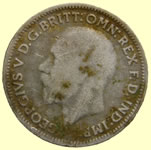 |
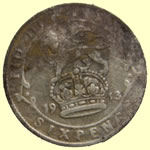 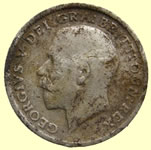 |
||||||||||||||||
1934 George V milled silver sixpence |
1913 George V milled silver sixpence |
||||||||||||||||
 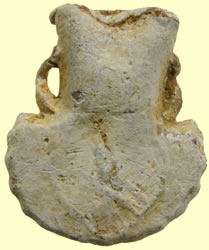 |
|||||||||||||||||
Medieval Pilgrim ampullae - holly water bottle made of lead -12th to 15thC, Scallop shell type with merchant shield on reverse |
|||||||||||||||||
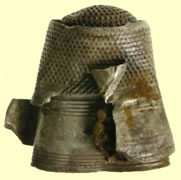 |
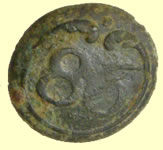 |
 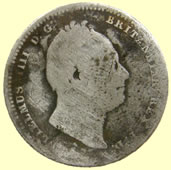 |
|||||||||||||||
2 Georgian silvers thimbles inside each other |
French Napoleonic 85th Regiment of the line |
1836 William III milled silver shilling (12 pence) |
|||||||||||||||
  |
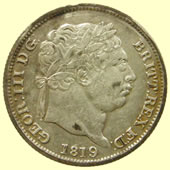 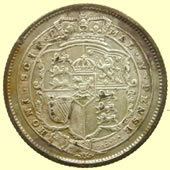 |
||||||||||||||||
1899 Victoria milled silver sixpence |
1818 George III milled silver shilling (12 pence) |
||||||||||||||||
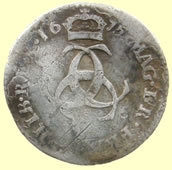 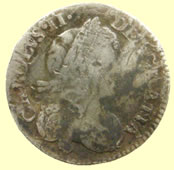 |
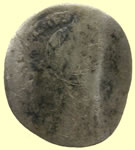 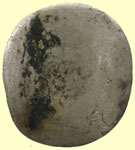 |
||||||||||||||||
1675 Charles II milled silver 3 pence |
1696 William III milled silver sixpence |
||||||||||||||||
 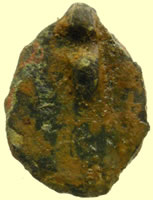 |
|||||||||||||||||
C13thC Medieval vessica seal matrix - appears to be a prancing Lion - soaking it in distilled water to clean up impression |
|||||||||||||||||
  |
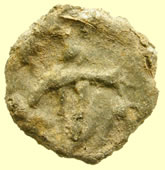 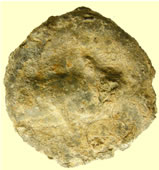 |
||||||||||||||||
Wisdom, Strength Corporation mount ? |
Roman lead token |
||||||||||||||||
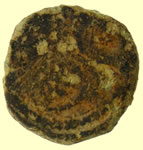 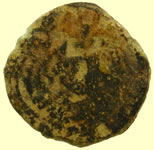 |
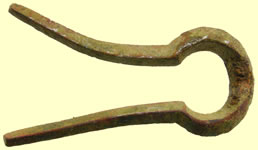 |
||||||||||||||||
Medeival ship type gold Nobel coin weight |
18thC Jew's harp |
||||||||||||||||
 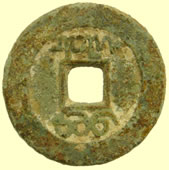 |
|
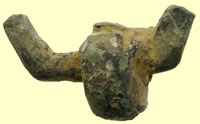 |
|||||||||||||||
19thC Chinese cash coin |
Roman buckle tongue |
Medieval chaffing dish handle fragment |
|||||||||||||||
 |
 |
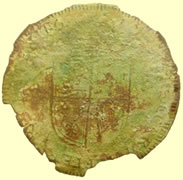 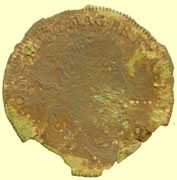 |
|||||||||||||||
Georgian watch winder |
Crown VR military button |
Johan Conrad Hergen, master 1705 French style jetton 1705 -1743 |
|||||||||||||||
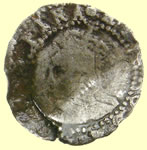  |
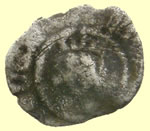 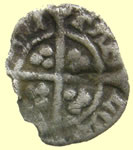 |
||||||||||||||||
1592-5 Elizabeth 1st hammered silver penny |
1485-1509 Henry VII hammered silver halfpenny - Cross fourchee Rev CIVI/TAS/LON/DON - London mint |
||||||||||||||||
  |
 |
||||||||||||||||
1936 George V milled silver sixpence |
16thC Tudor clothing fastener with religious inscription
IHS: dating from the 8th c., this is an abbreviation for "IHESUS," the way Christ's Name was spelled in the Middle Ages (despite popular belief, the monogram stands neither for "Iesus Hominum Salvator" --"Jesus Saviour of Men" -- nor for "In His Service.") Popularized by St. Bernardine of Siena, the monogram was later used by St. Ignatius of Loyola as a symbol for the Jesuit Order. The IHS monogram is an abbreviation or shortening of Jesus' name in Greek to the first three letters. Thus ΙΗΣΟΥΣ, ιησυς (iēsus, "Jesus"), is shortened to ΙΗΣ (iota-eta-sigma), sometimes transliterated into Latin or English characters as IHS or ΙΗC. The symbol is said to appear rarely in the catacombs, only in the catacomb of Priscilla and the atrium of the Capella Gr�ca (Greek Chapel).1 It was popularized in the fifteenth century, however, by Franciscan disciple Bernadine of Sienna as a symbol of peace. In 1541 St. Ignatius Loyola adopted the symbol with three nails below and surrounded by the sun as the seal of the Jesuit order. Contrary to some authors, the monogram originally stood for neither for Iesus Hominum Salvator ("Jesus Savior of Men") nor for "In His Service." Some attribute its origin to Constantine's vision, where he saw a cross with the inscription "In hoc signo vinces" ("in this sign you shall conquer,"2 which is abbreviated, according to them, as IHS. However, this seems to require a stretch, as do claims that it is really a pagan symbol. The simplest explanation, as an abbreviation of Jesus' name, is best. |
||||||||||||||||
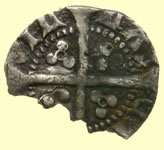 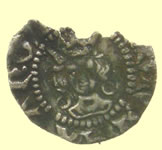 |
 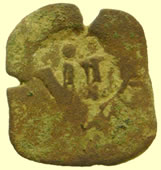 |
||||||||||||||||
1422-1427 Henry VI hammered silver penny - annulets by neck - annulets in 2 qtrs on obv pellets - First reign annulet coinage Obv + HENRICVS REX ANGLIE Rev VIL/LA/CAL/ISIE |
1652, 8 Maravedis revalidated with VIII counterstamp on 8 Maravedis of 1625 of uncertain mint, Felipe IV (1621-1665) of Spain
|
||||||||||||||||
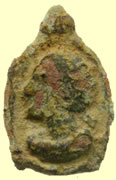 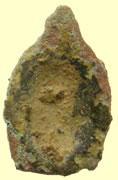 |
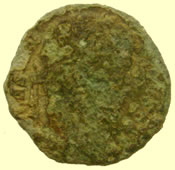 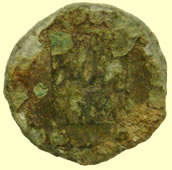 |
||||||||||||||||
Medieval mount with 2 integral lugs |
Mid 4thC Roman bronze coin House of Constantine bronze coin |
||||||||||||||||
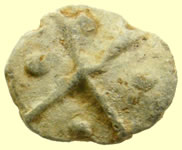 |
 |
 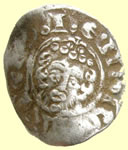 |
|||||||||||||||
15thC lead token - type 2 |
1550 -1650 buckle |
1216- 1242 Henry III hammered silver penny - Class 7b Obv HENRICVS REX Rev HENRI ON CANTE - Moneyer Henri of Canterbury |
|||||||||||||||
More finds posted on 2010 Sept finds page More finds posted on 2010 Oct finds page I More finds posted on 2010 Nov finds page I |
|||||||||||||||||
 |
|||||||||||||||||






